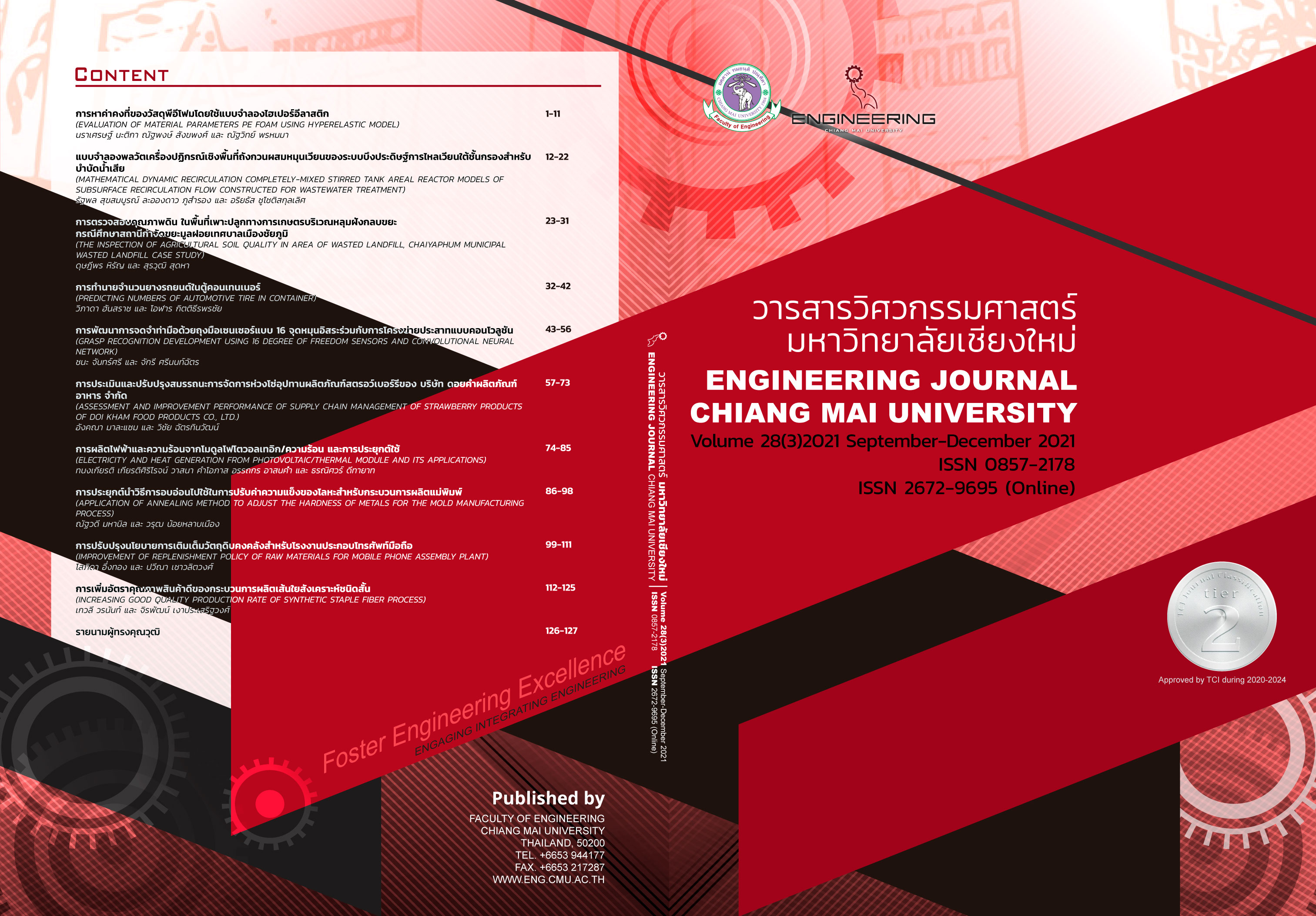Application of Annealing Method to Adjust the Hardness of Metals for The Mold Manufacturing Process
Keywords:
Endmill, Automation Turning;, Annealing Method, The Die Manufacturing ProcessAbstract
Due to the impact of the COVID-19 that is spreading around the world, the automobile manufacturing industry in Thailand has declined, and affects the production structure and automotive exports, especially for manufacturers of automotive-related parts. In this research, the researcher studied the working process of automotive parts manufacturers in the mold manufacturers group. The objectives of this research were: 1) to improve the mold manufacturing process. The study uses the annealing method to adjust the ingot hardness before entering the automatic turning process using endmills, and 2) to test the difference in die life before and after the improvement. The annealing method is used as a technique to improve the mold manufacturing process, which is to reduce the hardness value of SKD11 type metal before forming the work piece in an automatic lathe method using an endmill. At 500 degrees Celsius, it takes 420 minutes to reduce the hardness value. The metal is then put into the automatic turning process using an endmill until the part is formed. Then the workpiece is milled to shape with a machining center. After that complete part is obtained, it is restored to the original hardening at a temperature of 500 degrees Celsius. It takes 420 minutes to achieve the hardness as specified in the drawing, and it is taken to the next step as before. Results from the study of the annealing method and improving the production process showed that the efficiency of the endmill was increased. At the same volume of production, the average endmill was reduced from 41.33 bars/month to 14 bars/month and the test results were not different before and after the improvement of the tool life by a significance level of 0.05.
References
[2] William D. and Jr. Callister. (2007). MATERIALS SCIENCE AND ENGINEERING AN INTRODUCTION, John Wiley & Sons Inc., New York, U.S.A.
[3] Costin H. (1996). Management development and training: a TQM approach, The Dryden Press, London.
[4] Kaoru Ishikawa. (1953). Cause-and-Effect Diagram, Tokyo University.
[5] Montgomery Douglas C. and Runger George C. (1994). Applied statistics and probability for engineers, John Wiley & Sons Inc., New York, U.S.A.
[6] N.E.Savinand Kenneth and J. White. (1977). The Durbin-Watson Test for Serial Correlation with Extreme Sample Sizesor Many Regressors, Econometrica, vol.45 (8), Nov 1977, pp. 1989- 1996.
[7] คงฤทธิ์ นครชัย. (2559). ศึกษาการลดต้นทุนการผลิตใน กระบวนการกลึงอัตโนมัติโดยการใช้เงื่อนไขการตัดเฉือน ที่เหมาะสม, วิทยานิพนธ์หลักสูตรวิศวกรรมศาสตร มหาบัณฑิต, สาขาวิชาการจัดการงานวิศวกรรม, คณะ วิศวกรรมศาสตร์, มหาวิทยาลัยบูรพา.
[8] มนตรี วงษ์สุวรรณ. (2559). ศึกษาความเป็นไปได้ในการ ป้องกันการสูญเสียคาร์บอนที่ผิวของแม่พิมพ์โลหะที่ผ่าน กรรมวิธีปรับปรุงสมบัติทางความร้อน, สาขาวิศวกรรม อุตสาหการ,คณะครุศาสตร์อุตสาหกรรม, มหาวิทยาลัย เทคโนโลยีราชมงคลสุวรรณภูมิ.
Downloads
Published
Issue
Section
License
ลิขสิทธิ์ของบทความที่ตีพิมพ์ในวารสารฉบับนี้จะยังเป็นของผู้แต่งและยินยอมให้สิทธิ์เผยแพร่กับทางวารสาร
การเผยแพร่ในระบบวารสารแบบเปิดนี้ บทความจะสามารถนำไปใช้ได้ฟรีในการศึกษา และในทางที่ไม่เกี่ยวกับการค้า



